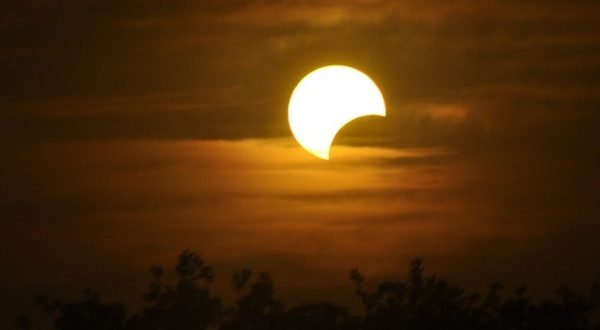[ad_1]
Last Summer, it seemed that everyone in the U.S. was talking about the so-called “Great American Eclipse,” which roared across the lower 48 from Oregon to South Carolina during the day of August 21, 2017. It was the first time that we’d had a coast to coast total solar eclipse in 99 years, and some news outlets claimed that it was the most directly observed—as well as most watched (on television, that is) eclipse in history.
Well, if you were one of the many who were bitten by last summer’s eclipse bug, you’ve made it halfway to the next total solar eclipse, which will pass through Chile and Argentina on July 2, 2019. The eclipse, with most of its track through the southern Pacific Ocean, has a maximum length of 4 minutes 32 seconds, but that will be relegated to shipboard viewers far from any shore. The track will afford land-based viewers up to 2 minutes 36 seconds of totality once it hits the shores of Chile about 250 miles north of Santiago, near the town of La Serena.
The moon’s shadow quickly moves eastward over the Andes and into Argentina, where it passes north of Mendoza and south of Córdoba, before leaving the Earth’s surface at sunset just southeast of Buenos Aires, which will see the sun about 99.7% covered—iif its western evening horizon is clear.
Weather prospects for this eclipse aren’t ideal across the entire track, as it will happen in the middle of the Southern Hemisphere’s Winter, making cloudy conditions a real possibility, especially near the coasts. But a bright spot (pun intended) lies in western Argentina, near the Andes, where Pacific storms can’t reach and where Atlantic fronts rarely affect things.
The timing of the eclipse from both Chile and western Argentina also will play a role. The eclipse will occur late in the day, approaching sunset, with the sun standing 13° above the horizon at the moment of totality (and progressively moving lower as you go eastward along the track towards Buenos Aires). This could be challenging if there are clouds ringing the horizon—but also offers a potentially stunning sight of the eclipsed sun hanging over the Andes, if you’ll be viewing things from the eastern foothills.
Traveling to see this eclipse affords some wonderful side trips, including some major astronomical observatories in and around La Serena. If you’re looking for more down-to-Earth pursuits, colorful Santiago and Buenos Aires are the urban stars, while Mendoza may make an attractive choice for oenophiles, with its world-class Malbecs. The Atacama Desert, a few hundred miles north of the totality track, is one of Chile’s top tourist attractions, and has been compared to the surface of Mars.
And if you simply can’t make it in 2019, you’ll have another chance at midday darkness in South America. About 17 months later, the next total solar eclipse hits both countries once again—although about 700 miles further south than the 2019 track. The December 14, 2020 eclipse will be shorter in duration at 2 minutes 9 seconds—but will happen in mid-summer over the world-famous Lake District, presenting an amazing travel opportunity.
[ad_2]You can read more of the news on source
 Travelsmart
Travelsmart



